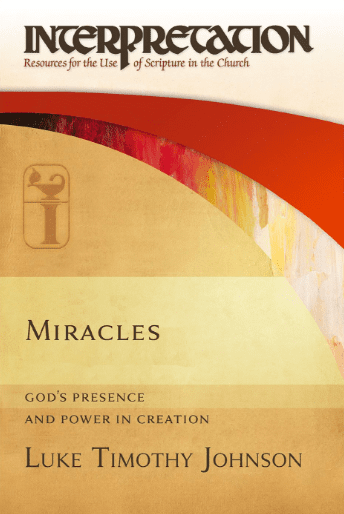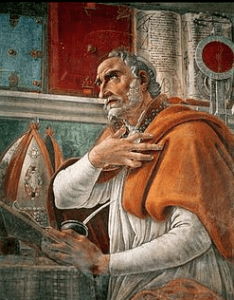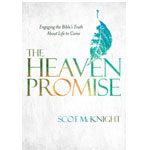 I’ve been reading Stephen Jay Gould’s short book Rocks of Ages: Science and Religion in the Fullness of Life in which he outlines the concept of non-overlapping magisteria (NOMA), an important concept in the discussion of science and Christian faith. In Chapter 2 Gould provides two examples illustrating the idea of NOMA and the compatibility of science and faith under this principle. The first is the position that the Catholic Church through Pope Pius XII and John Paul II has taken on evolution in general and human evolution in particular. The second is the example of many Christian scientists, especially at the dawn of the scientific age. Isaac Newton is a start.
I’ve been reading Stephen Jay Gould’s short book Rocks of Ages: Science and Religion in the Fullness of Life in which he outlines the concept of non-overlapping magisteria (NOMA), an important concept in the discussion of science and Christian faith. In Chapter 2 Gould provides two examples illustrating the idea of NOMA and the compatibility of science and faith under this principle. The first is the position that the Catholic Church through Pope Pius XII and John Paul II has taken on evolution in general and human evolution in particular. The second is the example of many Christian scientists, especially at the dawn of the scientific age. Isaac Newton is a start.
The story of Galileo is often put up as an example of the warfare between science and Christian faith – unfairly most historians will agree. Yes Galileo was put on trial and forced to recant, although he was ultimately (many, many years after his death) proven right. But there is a lot more to the story that simply science and faith. As Gould puts it “Galileo moved too fast and too far in an unnecessarily provocative manner.” He didn’t just provide a view – he mocked the powers of the day.
A move toward NOMA. More recently the Catholic church has tended toward a view consistent with Gould’s description of NOMA. In Humani Generis Pope Pius the XII allowed that evolution, if proved to be true, was consistent with the faith – although he held that the human soul was immediately created by God, not a product of gradual, natural evolution. He himself was not convinced that evolution was yet proven true.
John Paul II (1996) moved a step further.
In his encyclical Humani Generis (1950), my predecessor Pius XII had already stated that there was no opposition between evolution and the doctrine of faith about man and his vocation.
Pius XII added … that this opinion [evolution] should not be adopted as though it were a certain proven doctrine … Today, almost half a century after the publication of the encyclical, new knowledge has led to the recognition of the theory of evolution as more than a hypothesis. It is indeed remarkable that this theory has been progressively accepted by researchers, following a series of discoveries in various fields of knowledge. The convergence, neither sought nor fabricated, of the results of work that was conducted independently is in itself a significant argument in favor of the theory. (As quoted by Gould p. 80-82)
The general thrust is clear – at least the Catholic church holds that scientific questions are addressed using scientific methods. When the data is in and a judgment rendered, there is no problem accepting theories put forth. But there are many questions (the soul being one of these) that science is not really competent to address.
 The second illustration Gould presents is the implicit principle of NOMA embraced by many religious scientists, including Isaac Newton (right). Early scientists remained ardent theists – and made no attempt to disguise this fact. Most religious scientists today, including those with strong theological commitments (and that would include me), hold to a version of NOMA as well. Gould calls it “bench-top materialism.” These scientists tend to …
The second illustration Gould presents is the implicit principle of NOMA embraced by many religious scientists, including Isaac Newton (right). Early scientists remained ardent theists – and made no attempt to disguise this fact. Most religious scientists today, including those with strong theological commitments (and that would include me), hold to a version of NOMA as well. Gould calls it “bench-top materialism.” These scientists tend to …
hold that the “deep” questions about ultimate meanings lie outside the realm of science and under the aegis of religious inquiry, while scientific methods, based on the temporal invariance of natural law, apply to all potentially resolvable questions about facts of nature. (p. 84)
Certainly I assume that scientific methods based on the natural laws we know and are yet uncovering will apply to the questions about facts of nature. This informs the way I view the fossil record, and the information contained in the genomes of plants, animals, and all forms of life. There is a remarkable coherence between chemistry, physics, biology, … all the sciences. I see no reason to assume that God must have moved outside the natural realm to form the marvelous diversity of life we observe around us and find evidence for in the past.
Gould goes a step further however.
The first commandment for all versions of NOMA might be summarized by stating: “Thou shalt not mix magisteria by claiming that God directly ordains important events in the history of nature by special interference knowable only through revelation and not accessible to science.” In common parlance, we refer to such special interference as “miracle” – operationally defined as a unique and temporary suspension of natural law to reorder the facts of nature by divine fiat. … NOMA does impose this “limitation” on concepts of God, just as NOMA places equally strong restrictions upon the imperialistic aims of many scientists (particularly in suppressing claims for moral truth based on superior understanding of factual truth in any subject). (p. 84-85)
 This is an interesting claim – and one worth some discussion. Gould relates how Newton was quite willing to allow that God might have acted miraculously in the creation and development of the world. Thomas Burnet (right), a friend of Newton and a clergyman, was far less willing to allow for miraculous intervention. Each proposed intervention seemed to him to introduce at least as many problems as it purported to solve. Their conversation, as so many today, focused on the six days of creation as related in Genesis 1. Newton suggested that the rotation of the earth might have been much slower, resulting in longer days – an explanation Burnet found rather unnecessary. There are better ways to reconcile Genesis 1 with observations concerning the natural world.
This is an interesting claim – and one worth some discussion. Gould relates how Newton was quite willing to allow that God might have acted miraculously in the creation and development of the world. Thomas Burnet (right), a friend of Newton and a clergyman, was far less willing to allow for miraculous intervention. Each proposed intervention seemed to him to introduce at least as many problems as it purported to solve. Their conversation, as so many today, focused on the six days of creation as related in Genesis 1. Newton suggested that the rotation of the earth might have been much slower, resulting in longer days – an explanation Burnet found rather unnecessary. There are better ways to reconcile Genesis 1 with observations concerning the natural world.
But perhaps Gould goes too far. I am willing to allow for “miraculous” intervention – but see no reason for assuming that God acted miraculously in forming the world as we see it. Science is ideally suited to uncover the laws that govern the behavior of material systems and to trace the chain of events that led to the world around us. Call it “bench-top materialism” if you wish. The power of scientific explanation is overwhelmingly convincing, instead of unrelated facts there is a coherent story. Complexity (and life is undeniably complex) highlights questions and current ignorance – but it isn’t really evidence for “miraculous” intervention. We read the Bible wrong when we think it teaches us science, especially the science of origins. Old Testament scholars have a lot to teach us here. I agree with Burnet rather than Newton.
On the other hand Gould’s first commandment seems to rule out the miraculous altogether. Even miracles such as those recounted in the Gospels, the healings, feeding the five thousand, calming the storm, the resurrection, are out of bounds. If this is part of NOMA, then it goes too far.
Two reasons will get us started.
First, the Bible relates the story of a personal God in relationship with humans created in his image. The interactions of a personal God with his creatures are not explicable through natural mechanism alone. It isn’t special interference but the normal course of such a relationship. The personal is brought to earth in Jesus.
Second, God is sovereign over creation and has a plan for the future. Jesus is not a good moral teacher wandering around dispensing truths. He is enacting the mission of God, and this isn’t neatly separated from the natural world. “What kind of man is this?” his disciples wonder, “Even the winds and the waves obey him!” The healings of Jesus are another powerful example. These are not psychosomatic, with natural explanation, or the actions of a tinkerer demonstrating his supernatural power (i.e. divinity). They are an enactment of the coming kingdom of God and the constitution or reconstitution of the people of God as it is meant to be.
A strict adherence to NOMA – if it eliminates the miraculous – simply doesn’t do justice to the Christian faith.
… but the earth is old, evolution is true, scientific questions are best addressed by scientific methods, and many of the ultimate questions (moral truth, beauty, meaning and purpose, etc.) are not scientific question. Gould got a lot right as well.
What do you think?
When is NOMA right?
What are its limitations?
If you wish to contact me directly you may do so at rjs4mail [at] att.net
If interested you can subscribe to a full text feed of my posts at Musings on Science and Theology.










